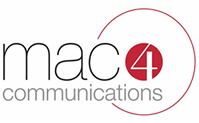
In today’s workplace, where remote working is a norm and freelancers are a plenty, internal communications are the key to instilling brand culture.
Working 9 to 5 in a corporate office is gradually becoming a thing of the past. In its research on work-life 3.0, PwC found that 38% of U.S. employees work from home at least one day a week. And according to a survey by Upwork and the Freelancers Union, the freelance economy now represents 35% of the total U.S. workforce.
While working from home boosts productivity and morale, it also makes the important task of communicating brand culture more challenging. When employees work in an office, it’s easier for them to experience management and fellow colleagues living the brand day in and day out. The same culture doesn’t always translate through conference calls, emails and chats. That’s exactly why you need a clear, consistent communications plan to get the word out in a manner that everyone will hear, pay attention to, understand and share. Here are four ways to ensure your internal brand communications are heard in the shifting work environment:
- Use creative, professional communications. You wouldn’t just throw together an email to share a big announcement or product launch with customers or the public. You are selling your brand internally, so your materials should be as inspired and engaging as they would be for an external marketing campaign. It’s even more important now that your internal audience may be working remotely – you need to catch their eye and make sure the message is simple and strong enough to resonate. Dry, boring communications simply won’t cut it.
- Have a communications game plan for new employees and freelancers. New employees and freelancers should be introduced to the brand culture on day one. Onboarding communications that outline company guidelines, beliefs and expectations (and make it clear what your brand stands for) are just as important as all of the HR and payroll forms that employees complete on their first day. Thinking beyond the PowerPoint and fact sheet (to creative medium and real-life stories) is one way to ensure communications help new employees understand what the company is all about.
- Take advantage of HR policies and benefits as opportunities to communicate brand culture. Internal brand communications should not just be a series of emails or newsletter blurbs, but messages that are intertwined in everyday experiences. For instance, the communication of a unique benefit that reflects the company’s culture is a natural way to reinforce the brand message. If your mission is protecting the environment, you might reward employees for carpooling or biking to work. Communicating programs that allow employees to experience and enjoy the brand allows you to get the message out and ensures they are living the culture, whether in or out of the office.
- Remember that it’s no longer just about a company brand. Freelancers are very in tune with their personal brands, and are more likely to view their work as a testament to their personal brand rather than a representation of the company brand. By using communications to shine a spotlight on individuals who are living the brand in their own personal way, companies can adjust their brand view to include many personal brands working towards its shared values and goals.
As the freelancing and flexible work trends increasingly permeate workplaces, brand culture and the way we communicate it will continue to change. The businesses that stay on top with strong internal communications programs will ensure the brand message gets out – and experienced – by employees of all types.
Author: Estera Hayes

